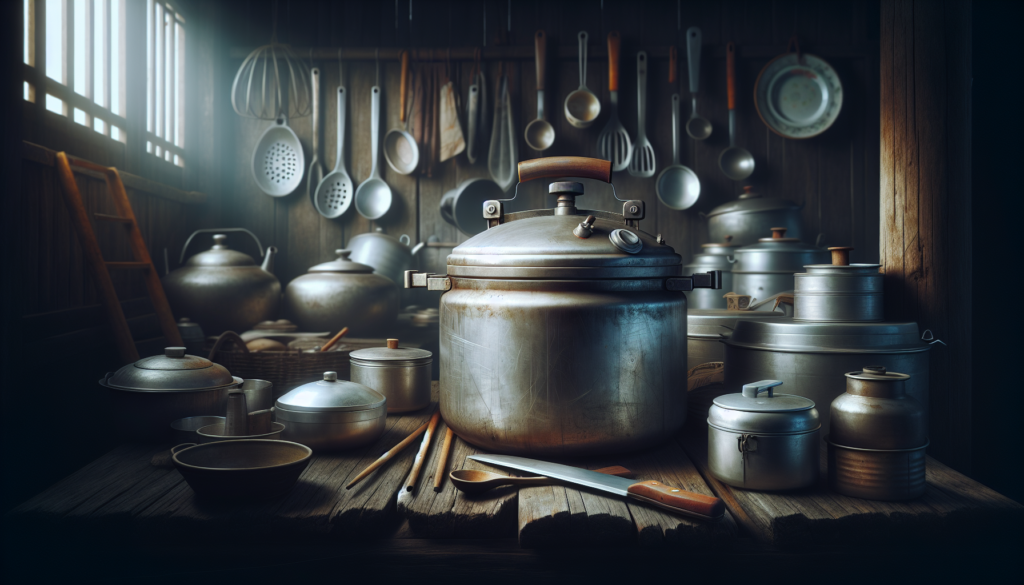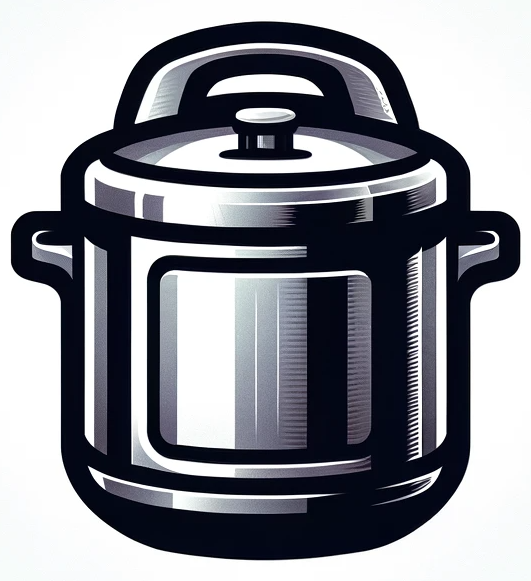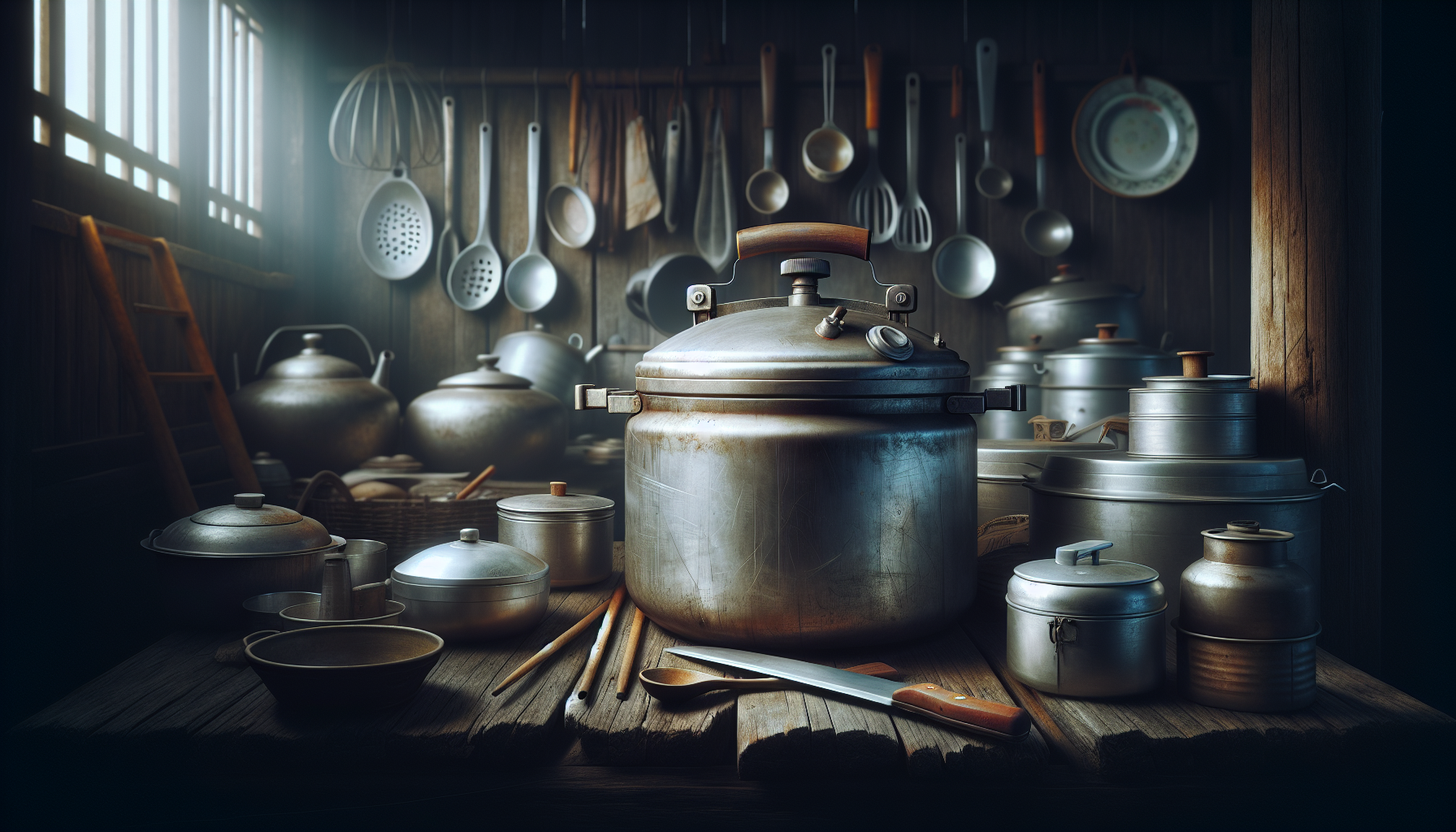Pressure cookers are a popular choice for busy individuals who want to save time in the kitchen while still enjoying delicious meals. However, like any other kitchen appliance, pressure cookers do come with their own set of weaknesses. In this article, we will explore the potential downsides of pressure cookers and provide some tips on how to overcome these limitations. Whether you are a seasoned pressure cooking enthusiast or just starting out, understanding the weaknesses of pressure cookers can help you make the most out of your cooking experience. So, let’s dive in and uncover the secrets of pressure cooker weaknesses!

CHECK OUT PRESSURE COOKERS ON AMAZON
Lack of temperature control
No ability to adjust cooking temperature
One of the significant weaknesses of a pressure cooker is its lack of ability to adjust cooking temperature. Unlike other cooking methods, such as stovetop or oven cooking, where you have control over the heat level, a pressure cooker operates at a fixed temperature. This can be problematic when you need precise temperature control for certain recipes, especially those that require delicate cooking techniques or specific temperature ranges to achieve the desired results.
Potential for overcooking or burning food
Due to the limited temperature control, there is a potential for overcooking or burning the food in a pressure cooker. Since the cooking process is based on high-pressure steam, the food can easily become overcooked and lose its texture and flavors. This is particularly true for delicate ingredients that require gentler cooking methods. Additionally, if the pressure cooker is not properly monitored or the cooking time is exceeded, there is a higher risk of burning the food, resulting in an unpleasant taste and potentially ruining the entire dish.
Risk of explosion
Buildup of excessive pressure
One of the most significant concerns with pressure cookers is the risk of explosion. Pressure cookers work by trapping steam inside a sealed pot, creating high pressure to cook the food faster. However, if the pressure builds up excessively due to a malfunction or improper handling, it can lead to a dangerous situation. This buildup of excessive pressure can cause the pressure cooker to explode, posing a risk of serious injury or damage to the surroundings.
Poorly designed or faulty pressure release mechanisms
The risk of explosion is further amplified by poorly designed or faulty pressure release mechanisms in some pressure cookers. These mechanisms are meant to release the excess pressure to maintain a safe cooking environment, but if they are not functioning correctly, the pressure can continue to build up inside the cooker. This not only raises the risk of an explosion but also makes it challenging to control the cooking process and ensure the food is cooked properly.
Improper handling or misuse
Improper handling or misuse of pressure cookers can significantly increase the risk of an explosion. It is crucial to follow the manufacturer’s instructions carefully and avoid actions that could lead to excessive pressure buildup, such as overfilling the cooker or opening it before the pressure has been fully released. Neglecting these precautions can result in a dangerous situation that puts both you and those around you at risk.
Limited cooking capacity
Size constraints
Another weakness of pressure cookers is their limited cooking capacity. Most pressure cookers have a fixed size and volume, which may not accommodate large food items or quantities. If you’re cooking for a large family or hosting a gathering, you might find yourself limited by the size of the pressure cooker. This can be especially frustrating when you’re trying to prepare a dish that requires more space, such as a whole chicken or a substantial amount of stew.
May not accommodate large food items or quantities
In addition to the size constraints, pressure cookers may not be suitable for cooking large food items or quantities. Some pressure cookers have a limited height or width, making it challenging to fit in larger pieces of meat or whole vegetables. Furthermore, even if you can fit the ingredients, their size may affect the cooking time and result in unevenly cooked food. This limitation can be a downside when you need to cook substantial portions or prepare dishes that require specific ingredient sizes.
Longer cooking times
Initial heating and building up pressure
Pressure cookers require a longer cooking time due to the process of initially heating the pot and building up pressure. Unlike other cooking methods that allow you to start cooking almost immediately, pressure cookers need time to heat up and reach the required pressure before the actual cooking begins. This delay adds to the overall cooking time, which can be inconvenient, particularly when you’re short on time or want to prepare quick meals.
Releasing pressure after cooking
Another factor contributing to longer cooking times with pressure cookers is the need to release the pressure after cooking. It is crucial to allow the pressure to naturally release or use a quick-release method to avoid any potential accidents. However, this additional step of waiting for the pressure to dissipate takes time and extends the overall cooking process. It’s important to factor in this extra time when planning your meals to ensure they are ready within the desired timeframe.
Not suitable for quick or last-minute meals
Due to the longer cooking times involved in pressure cooking, it may not be the best choice for quick or last-minute meals. If you’re looking for a cooking method that allows you to whip up a meal in a matter of minutes, a pressure cooker may not be the ideal option. While it can significantly reduce cooking times for certain dishes, the initial heating and pressure release phases can still consume a considerable amount of time. Therefore, it’s important to plan ahead and allocate sufficient time for pressure cooking to avoid any disappointment or delay in serving your meals.
Risk of scalding
Hot steam and liquid under pressure
Pressure cookers pose a risk of scalding due to the hot steam and liquid under pressure inside the pot. When the pressure cooker is opened or handled improperly, the high-pressure steam can escape rapidly and come into contact with your skin, causing severe burns. Additionally, the hot liquid inside the pressure cooker can also spill or splatter if not handled with caution, leading to scalding injuries. It’s important to be aware of these risks and take appropriate precautions when using a pressure cooker to prevent any accidents or harm.
Potential for burns while opening or handling the cooker
Apart from the risk of scalding, there is a potential for burns when opening or handling a pressure cooker. The lid and exterior of the pressure cooker can become extremely hot during the cooking process, and if you’re not careful, you can accidentally burn yourself. It’s essential to use oven mitts or other heat-resistant tools when handling the pressure cooker and allow sufficient time for it to cool down before attempting to open or move it. Neglecting these precautions can result in painful burns and possible long-term damage.
Requirement for careful monitoring
Maintaining ideal pressure levels
To ensure successful pressure cooking, it is necessary to carefully monitor the pressure levels inside the cooker. Pressure cookers often come with pressure indicators or gauges that allow you to check the pressure. It is important to maintain the ideal pressure throughout the cooking process, as too much or too little pressure can affect the cooking time and the final results. This requirement for constant monitoring and adjustment can be time-consuming and may require additional attention compared to other cooking methods.
Avoiding pressure fluctuations
In addition to maintaining ideal pressure levels, it is crucial to avoid pressure fluctuations during the cooking process. Sudden changes in pressure can lead to unevenly cooked food or even impact the overall safety of the pressure cooker. This means you need to be attentive and make adjustments to the heat source or stove settings as needed to maintain a consistent pressure. The need for careful monitoring and intervention can be challenging, especially for those who prefer a more hands-off approach in the kitchen.
Regular checking and adjustment of heat
Alongside monitoring the pressure levels, pressure cookers often require regular checking and adjustment of the heat source. This is because the rate at which the heat is applied plays a significant role in determining the pressure and cooking time. You may need to manually adjust the stove burner or heat source throughout the cooking process to maintain a consistent heat level. This constant monitoring and adjustment can be inconvenient and may require you to stay close to the pressure cooker during the cooking process.
Potential for flavor loss
Food can become overcooked or mushy
One of the weaknesses of pressure cooking is the potential for food to become overcooked or mushy. The high-pressure environment can break down the texture of certain ingredients, resulting in a less desirable consistency. This is especially true for delicate foods such as vegetables or seafood, which can quickly turn mushy if not cooked with precision. Therefore, it’s important to be mindful of the cooking time and pressure level to preserve the desired texture and avoid flavor loss.
Delicate flavors may dissipate under high pressure
The high pressure and intense heat of pressure cooking can also lead to the dissipation of delicate flavors in some ingredients. Certain herbs, spices, or aromatic components of a dish may lose their subtlety or intensity when subjected to the harsh conditions of pressure cooking. This can result in a less nuanced flavor profile and affect the overall taste of the dish. While pressure cooking can enhance the flavors of certain ingredients, it is less suitable for recipes that rely heavily on delicate flavors.
Limited cooking methods
Pressure cooking may not be suitable for all recipes
While pressure cooking is a versatile cooking method, it may not be suitable for all recipes. Certain cooking techniques or ingredients may not work well in a pressure cooker, limiting its usage. For instance, recipes that require browning or searing before pressure cooking may not achieve the desired results in terms of texture or flavor. Similarly, delicate desserts or dishes that rely on precise temperature control may not be suitable for pressure cooking. It’s important to understand the limitations of pressure cooking and choose recipes accordingly.
Certain cooking techniques or ingredients may not work well in a pressure cooker
In addition to recipe limitations, certain cooking techniques or ingredients may not work well in a pressure cooker. For instance, recipes that require constant stirring or visual observation throughout the cooking process may not be suitable for pressure cooking. Similarly, ingredients that require slow and gentle cooking, such as certain cuts of meat or delicate sauces, may not achieve the desired results in a pressure cooker. Understanding the specific requirements of your recipe and considering the capabilities of a pressure cooker will help you determine whether it is the right cooking method for your needs.
CHECK OUT PRESSURE COOKERS ON AMAZON
Requires extra care in cleaning
Complex components like valves, gaskets, and seals
Pressure cookers require extra care in cleaning due to their complex components such as valves, gaskets, and seals. These parts are essential for ensuring a proper seal and efficient pressure cooking, but they can accumulate food residue or become clogged over time. Cleaning these components thoroughly is crucial to maintain the performance and safety of the pressure cooker. It may require disassembling the parts, using specialized brushes or tools, and following the manufacturer’s instructions for cleaning procedures.
Proper disassembly and cleaning to prevent buildup of food residue
To prevent the buildup of food residue and maintain the efficiency of a pressure cooker, proper disassembly and cleaning are necessary. Depending on the model and design of the pressure cooker, you may need to remove the sealing ring, valves, or other detached components for cleaning. It is essential to follow the manufacturer’s instructions and ensure thorough cleaning of all parts to prevent any potential contamination or deterioration in the performance of the pressure cooker.
Not suitable for canning
Pressure cookers may not meet necessary requirements for safe canning
One of the weaknesses of pressure cookers is that they may not meet the necessary requirements for safe canning. While pressure canning is a popular method for preserving food, not all pressure cookers are suitable or approved for this purpose. Pressure canning requires precise temperature control and specific pressure levels to ensure the safety of the canned goods. Regular pressure cookers may lack the necessary features or certifications, making them unsuitable for canning purposes.
Lack of precise temperature control for canning purposes
Another reason why pressure cookers are not suitable for canning is the lack of precise temperature control. Unlike dedicated pressure canners, which are designed to reach and maintain the precise temperatures required for safe canning, regular pressure cookers often have limited temperature control options. The variations in temperature control and pressure levels in a pressure cooker may compromise the safety and quality of canned goods, making it essential to use appropriate canning equipment for this specific purpose.

